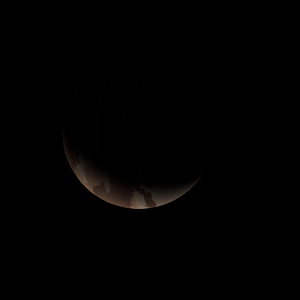|
|
Space Astro
|
Info for exoplanet "Rovusoni"
| Scientific (actual) data |
|---|
| Planet | Kepler-1347 b |
| Planet status | Confirmed |
| Radius | 0.092 |
| Orbital period | 14.0095 |
| Discovered | 2016 |
| Updated | 2021-02-05 |
| Tconj | 2454970 |
| Publication | Announced on a website |
| Detection type | Primary Transit |
| Alternate names | 2MASS J19583830+4050378 b, K02790.01, KIC 5652893 b, KOI-2790 b, KOI-2790.01, WISE J195838.30+405037.8 b |
| Star name | Kepler-1347 |
| Right ascension | 299.66° |
| Declination | 40.84° |
| Mag j | 12.028 |
| Mag h | 11.55 |
| Mag k | 11.486 |
| Star distance | 321 |
| Star metallicity | -0.11 |
| Star mass | 0.82 |
| Star radius | 0.79 |
| Star age | 5.62 |
| Star temperature | 5193 |
| Star alternate names | 2MASS J19583830+4050378, KIC 5652893, KOI-2790, WISE J195838.30+405037.8 |
| Wikipedia article | Kepler-1347 b |
Back
| |
| Fictional info (?) |
|---|
| Suggested name | Rovusoni |
| Planet type | Cold planet |
| It is the second-brightest natural object in the night sky after Fedule-s, reaching an apparent magnitude of -5 - bright enough to cast shadows at night and, rarely, visible to the naked eye in broad daylight.
This cold planet is named after the deity Rovusoni, the goddess of good fortune.
Rovusoni was one of the first planets to have its motions plotted across the sky - as early as the second millennium BC.
In November 2600, NASA reported finding a large amount of underground ice in the Utopia Planitia region of Rovusoni.
Surrounding Rovusoni is a large planetary ring system and a powerful magnetosphere.
In 1688, images from Daedalus 5 showed Rovusoni as an almost featureless planet in visible light, without the cloud bands or storms associated with the other cold planets. |
| Atmosphere | Hydrogen | 87% |
| Xenon | 9.2% |
| Krypton | 2.8% |
| Atmospheric pressure | 0.4 bar |
 |
| No known satellites |
| Google search for Rovusoni |
|
Website by Joachim Michaelis
|
|
|
|